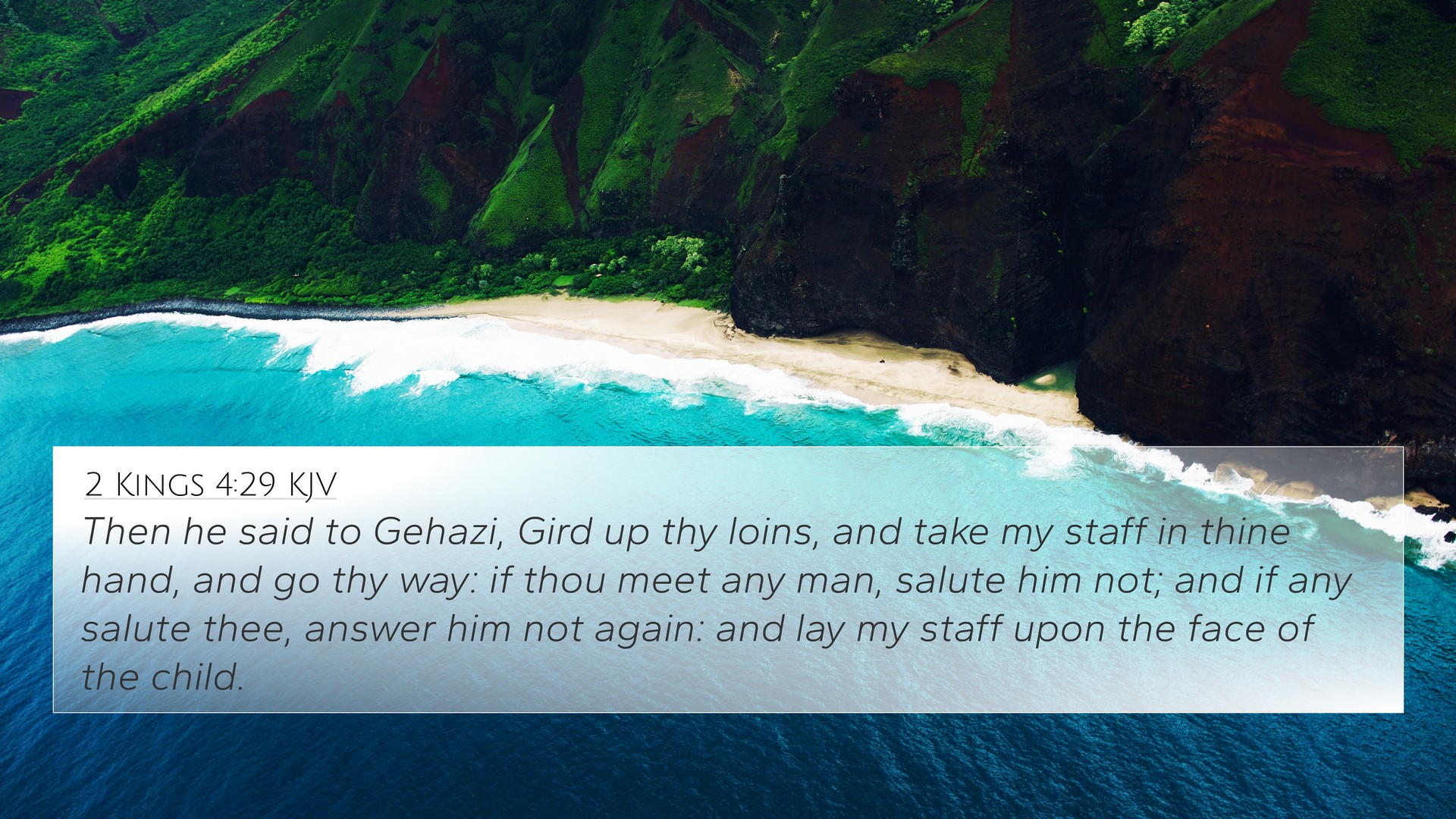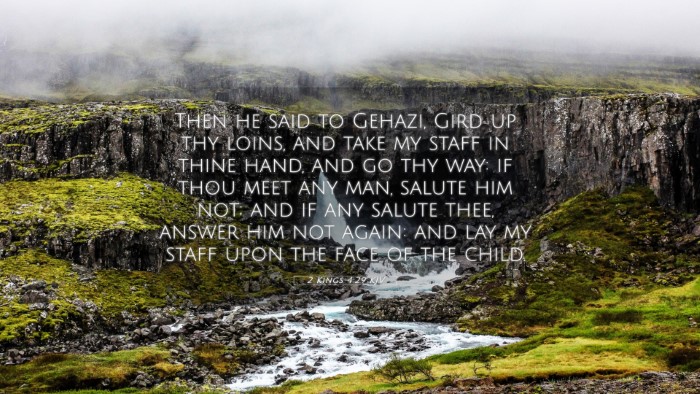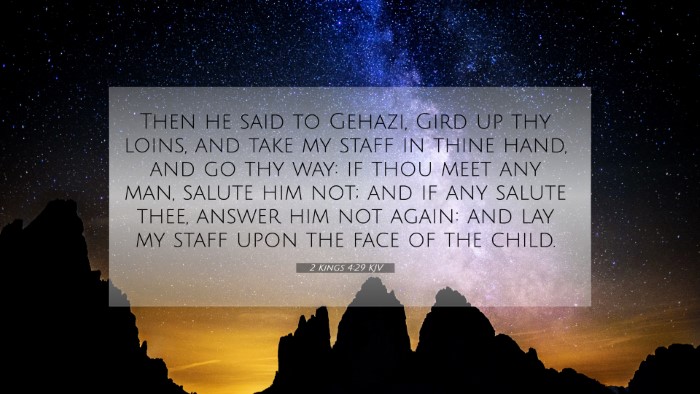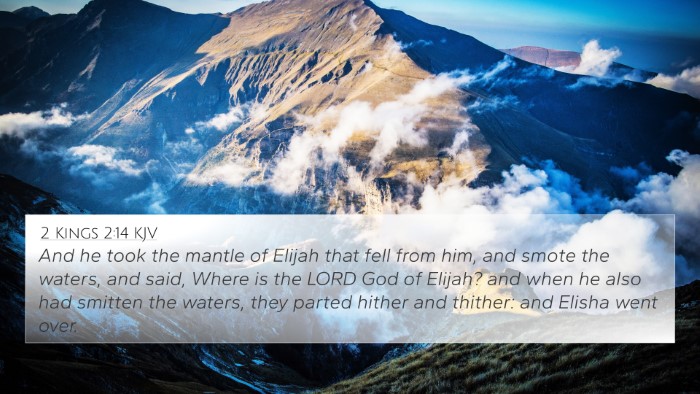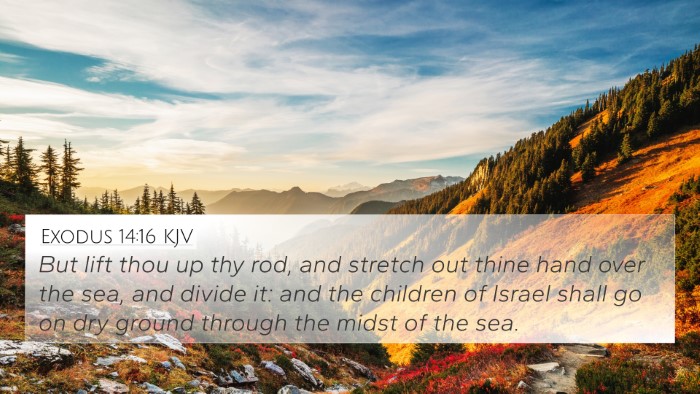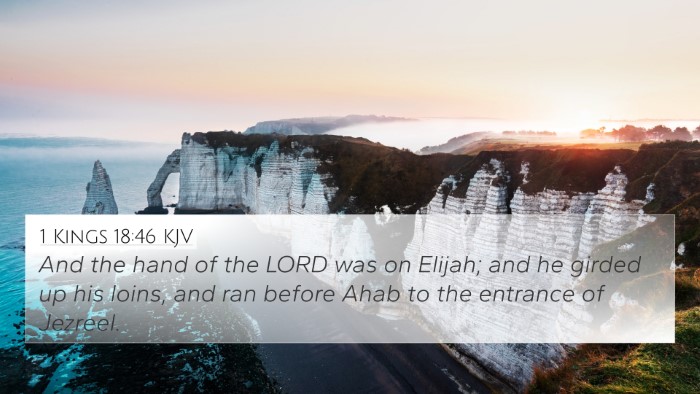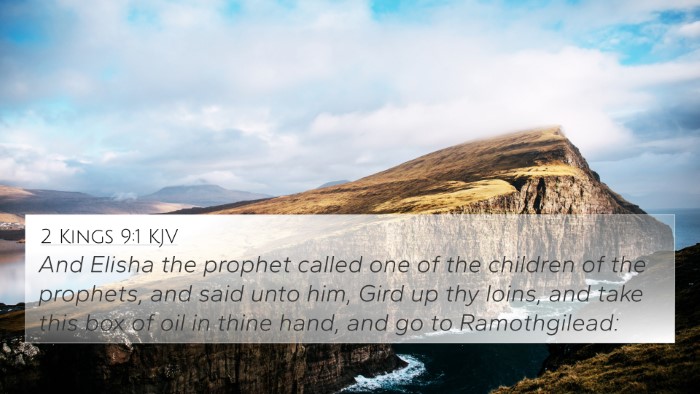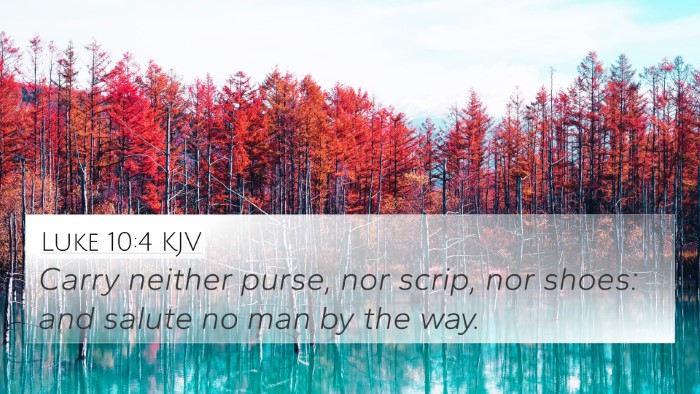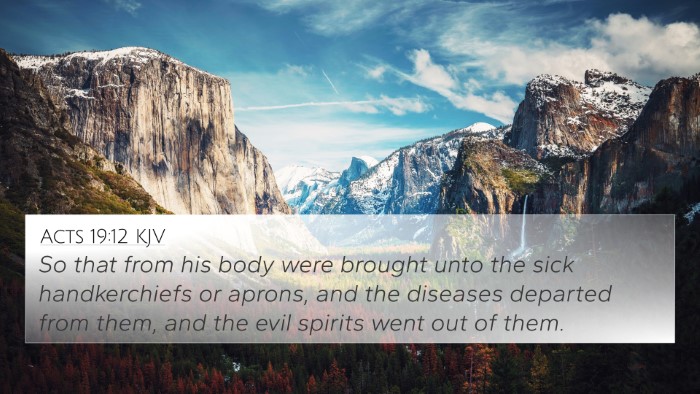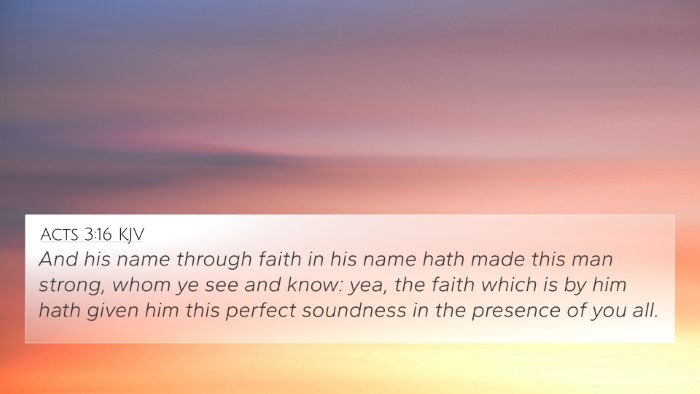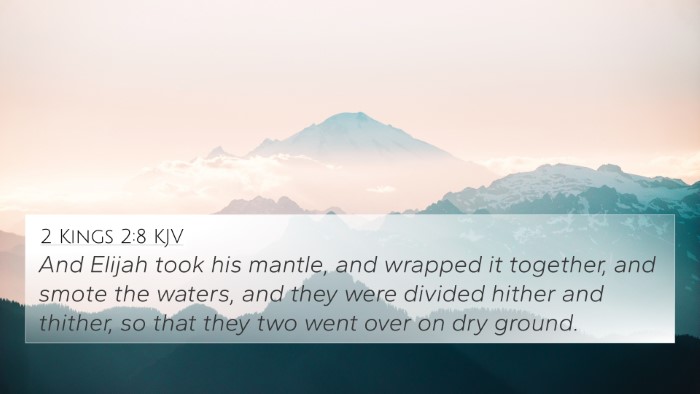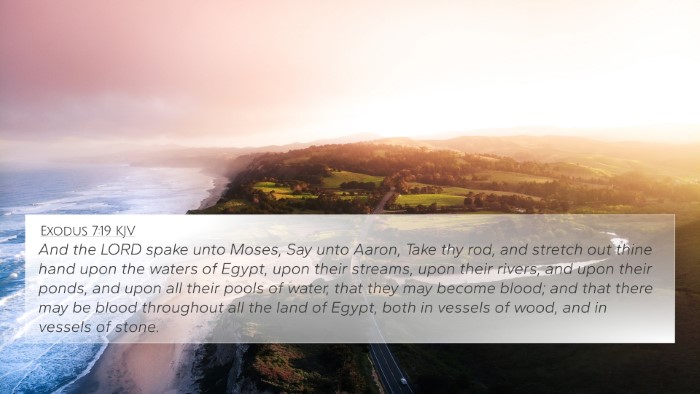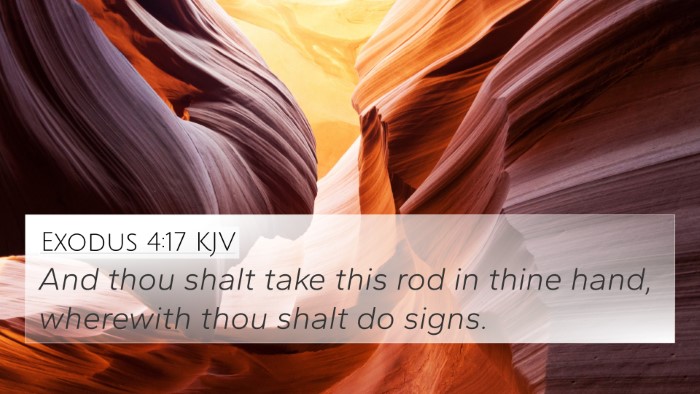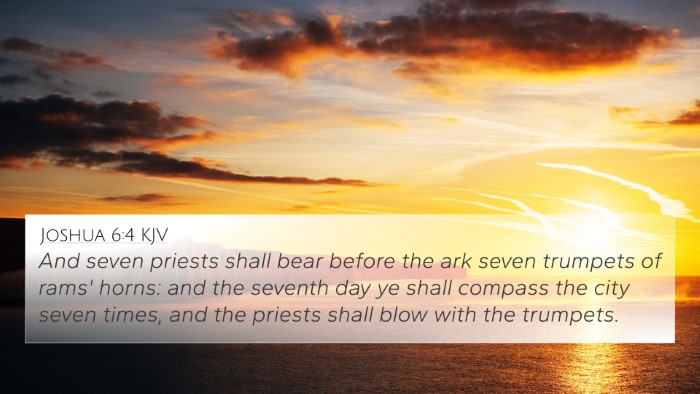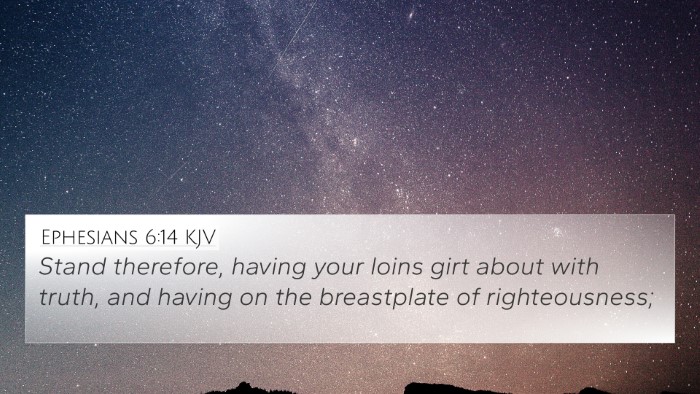Understanding 2 Kings 4:29
2 Kings 4:29 states, "Then he said to Gehazi, 'Gird up your loins and take my staff in your hand, and go your way. If you meet anyone, do not greet him; and if anyone greets you, do not answer him; but lay my staff on the face of the child.'" This verse is part of the narrative involving the prophet Elisha, who performs miracles and communicates God's power and presence through his actions. Below is a combined interpretation of this verse from various public domain commentaries.
Summary of Commentaries
- Matthew Henry's Commentary:
Henry notes that Elisha gives specific instructions to Gehazi, indicating the urgency and seriousness of the situation concerning the Shunammite woman's son who has died. The staff symbolizes the authority and power of the prophet, suggesting that the healing power of God was to be conveyed through Elisha’s staff. The instruction to not greet anyone emphasizes the importance of focus and determination in urgent tasks.
- Albert Barnes' Notes:
Barnes elaborates on the significance of Gehazi's task, illustrating how Elisha’s commands are deliberate and purposeful. The emphasis on Gehazi's appearance—girding up his loins—underscores the readiness for action, symbolizing that he is to prepare for urgent and perhaps strenuous work. Barnes interprets the staff not merely as a physical object but as a representation of divine authority and the prophetic word.
- Adam Clarke's Commentary:
Clarke provides insight into the cultural context of the command. He points out that greetings in Eastern cultures carry a significant weight, and neglecting them shows the urgent nature of the task assigned to Gehazi. Clarke stresses that the staff was an instrument for performing miracles in Elisha's ministry, and laying it on the child reflects a direct act of faith in God's ability to bring life back into the child.
Inter-Biblical Connections
This verse resonates with other biblical passages that also discuss themes of divine authority, urgency in service, and the power inherent in God’s representatives. Below are cross-reference insights that link this verse with others:
- 1 Kings 17:17-24 - The resurrection of the widow’s son by Elijah showcases a similar divine intervention through a prophet.
- 2 Kings 2:12 - Elisha's receiving of Elijah's mantle symbolizes the transfer of prophetic authority, highlighting his role as a healer.
- Matthew 10:14 - The instruction to shake off dust symbolizes the importance of focused mission similar to Gehazi’s urgent task.
- Mark 5:23 - The urgency shown in Jairus’s plea for Jesus to come and heal his daughter parallels the urgency in Gehazi’s mission.
- James 5:16-18 - The prayers of a righteous person are powerful, which links to Elisha’s role in intercessory prayer and miracles.
- Acts 19:11-12 - Handkerchiefs and aprons that performed extraordinary miracles are similar to how Elisha's staff was used.
- Hebrews 11:32-34 - This passage speaks of prophets who performed miracles and received strength, connecting directly to Elisha's ministry.
Thematic Connections
This verse reflects several profound biblical themes:
- Divine Authority: Both the staff and Elisha's actions symbolize his God-given authority.
- Urgency in Divine Tasks: Gehazi's mission emphasizes the necessity of dedication in fulfilling God's commands.
- Faith in Action: The act of laying the staff on the child's face conveys deep faith in God's restorative power.
Conclusion
2 Kings 4:29 reveals a pivotal moment in the ministry of Elisha, underscoring the importance of divine authority, urgency, and faith in God's power to heal. This verse not only illustrates the interactions between Elisha and Gehazi but also serves as a conduit for understanding the broader themes of God's active work in the lives of His prophets and people.
By engaging with this verse and its connections, readers can better understand the intricate tapestry of scripture and the important lessons it conveys across biblical texts.
